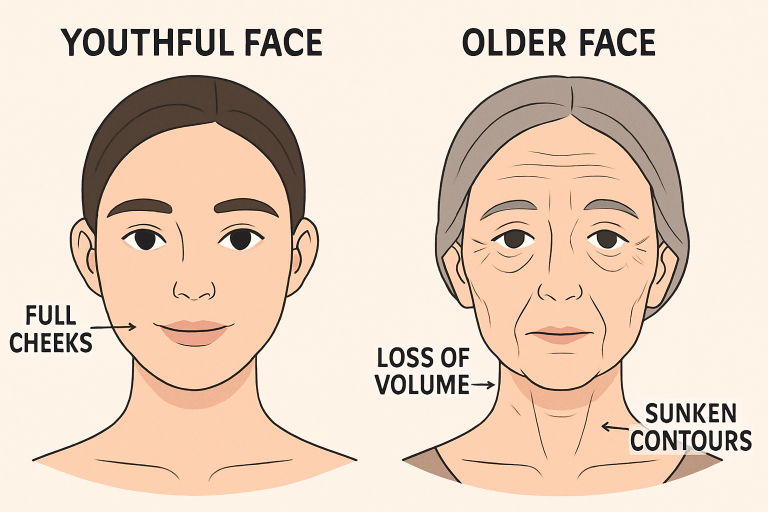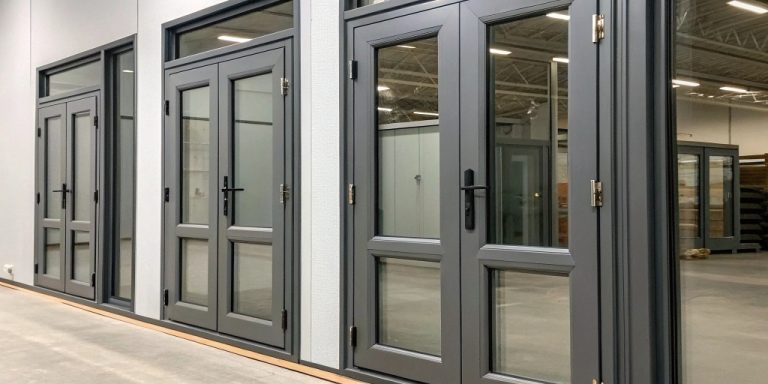
The Science of Facial Volume Loss: Causes, Prevention, and Modern Solutions
Key Takeaways
- Facial volume loss is influenced by both intrinsic aging and lifestyle choices.
- Contemporary injectables and minimally invasive methods offer new paths for facial rejuvenation.
- Sustained youthfulness relies on a blend of advanced treatment options and personalized daily skincare routines.
- Expert guidance and emerging research empower smarter decisions for maintaining natural facial contours.
What Is Facial Volume Loss?
Facial volume loss is a gradual process where the face loses its natural fullness, contours, and youthful appearance, often resulting in sunken cheeks, folds, or a hollow appearance. This is due to diminishing fat, decreased collagen production, and bone density shifts with age. Sculptra facelift without surgery in Salt Lake City offers a modern solution for restoring lost volume and supporting the skin’s underlying structure. The journey of volume loss doesn’t happen overnight, with subtle changes in the 30s becoming more pronounced in the 40s and beyond.
Why Facial Volume Loss Happens
The aging process is the primary cause of facial thinning and contour loss, primarily due to the reduction of hyaluronic acid, elastin, and collagen production. Genetics and lifestyle factors contribute to this process, with factors like UV damage, stress, and nutrition affecting the skin’s youthful bounce. Hormonal changes, particularly those linked to menopause, also decrease mid-face fat and accelerate bone resorption. External factors like pollution, sun exposure, and smoking break down collagen fibers, accelerating aging and necessitating preventative care.
Everyday Habits That Contribute to Volume Loss
- Excessive sun exposure not only damages the outer layer of skin but also reaches deeper, accelerating the loss of fat and collagen.
- Poor nutrition and chronic dehydration deprive the tissues of the nourishment they need to look and function at their best.
- Poor sleep and ongoing stress lead to elevated cortisol levels, which degrade the skin’s structural proteins.
- Tobacco usage constricts blood vessels and limits oxygenation, making the face appear gaunt and prematurely aged.
Small, consistent changes—like improved sun protection and stress management—can go a long way toward slowing visible aging and preserving facial harmony.

Can You Prevent Facial Volume Loss?
To slow down volume loss, use broad-spectrum SPF, antioxidants, and moisturizers to support skin repair and water retention. Eat a balanced diet rich in omega-3s, produce, and lean proteins for skin-building nutrients. Quit smoking, moderate alcohol intake, and prioritize restorative sleep as proactive steps to defend facial structure, as recommended by the American Academy of Dermatology.
Latest Treatments and Innovations
The recent wave of aesthetic medicine brings sophisticated, personalized solutions for facial rejuvenation. Injectable fillers top the list by replenishing lost volume and redefining contours without surgery or extensive downtime. Sculptra, a collagen-stimulating filler, stands out by supporting the skin’s own regenerative processes for gradual, long-lasting effects. Other innovative approaches include fat transfer, which moves one’s own fat into depleted areas, and biostimulatory treatments that trigger new collagen formation. Each of these solutions can be tailored to target unique facial concerns and the degree of volume loss.
Comparison of Popular Injectable Options
- Hyaluronic Acid Fillers: Instantly plump areas like the lips, cheeks, or under-eye hollows. Their effects are reversible and require maintenance every 6–12 months.
- Collagen Stimulators (e.g., Sculptra): Encourage gradual renewal for natural, longer-lasting fullness for up to two years.
- Fat Transfer: Harvesting one’s own fat provides semi-permanent solutions with a recovery period and varying results depending on individual metabolism and technique.
Clinicians often recommend a personalized blend of these treatments to maximize natural-looking results and patient satisfaction.
Skincare Tips for Maintenance
- Wear a broad-spectrum sunscreen with SPF 30 or above every day, as UV damage is a leading contributor to the premature breakdown of facial volume.
- Apply serums and moisturizers rich in peptides, antioxidants, and hyaluronic acid to help reinforce the skin’s protective barrier and maintain hydration.
- Use a gentle exfoliating treatment a few times per week to support healthy cell turnover, and follow with a nourishing night cream.
- Commit to healthy habits: regular exercise for circulation, a diet high in fruits, vegetables, lean protein, and stable sleep routines all support a plump, youthful facial appearance.
Expert Opinions and Future Trends
Dermatologists and cosmetic physicians are shifting towards subtle, holistic age management regimens that prioritize natural enhancement. This includes targeted injectables, regenerative medicine, and lifestyle coaching. Advances in biostimulatory fillers and minimally invasive devices will allow for customizable treatment protocols. These innovations stimulate the body’s repair systems, delivering long-lasting results and promoting not only a refreshed look but also long-term skin health.
Conclusion
Facial volume loss is a natural component of aging, but modern science and sensible self-care have armed consumers with an array of choices to maintain or restore youthful facial definition. Today’s best practices combine evidence-based injectables like Sculptra, daily sun protection, nutrition, and a tailored skincare routine. Together, these approaches make it possible to embrace aging gracefully while preserving self-confidence and vibrancy for years to come.


Average Rating